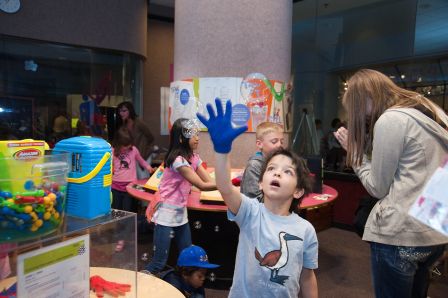Becoming a Life-long Innovator

0 thoughts on “Becoming a Life-long Innovator”
This is a great idea.
Impressive idea and research Kavi!
Before submitting your project, make sure you review your presentation. There might be a few last-minute changes you could make or add. You could’ve forgotten something and wanted to write some more on it, or you could fix something. Whatever it is, reviewing your presentation one last time is really important. It’s your final push to success.
With the things you learned while doing this challenge, you could also apply them to other situations, like competing in a competition. You could compete ferociously, but in a polite, friendly way. Or when you’re working with others, you would know to be respectful to other people’s opinions/ideas and how to add on to them, agree with them, or even disagree with them.
Anything and everything causes something to the universe, good or bad, it’s just up to you to make it count.
-
THANKS TO ALL OF YOUR GOOD COMMENTS!
Be sure to review your presentation before submitting!
Participating in the Invent It Challenge is a very interesting experience. This challenge helps stretch your creativity and enhances your critical thinking skills. This will help you everywhere in life.
Some tips for your presentation:
1. Include only a few words or sentences on each slide. That’s the most important thing to an excellent presentation. Presentations are supposed to go fast, but also make a mark in the audience’s minds. Too many words/sentences will need a lot of time to read it all. That’s why you need to make it interesting and plan it out first, then grasping the main sentence of the planned writing you just wrote.
2.Make sure your presentation is fun and interesting to read, or else others might not want to continue reading the rest of your presentation. Just like in writing, you need to hook your audience/readers with interesting, unique stuff.
3.Always plan your presentation first before actually typing it in. If not, you might include some pretty crazy information in your slides, and I’m sure you don’t want that. You’ll waste a lot of time just trying to delete all that information that you don’t need.
4. Don’t copy or take any photographed pictures taken by any of your friends without permission. That’s very bad, and would definitely make the photographer of that/those pictures very upset.
5. Add images to make your presentation more clear and easier to visualize. You can either take some pictures from the Internet(with permission), ask friends/colleagues if you could use their pictures, or even illustrate your own pictures(you need that in the Draw It step) and put them in your slides. After that, your presentation will be as colorful as can be.
1. When you try it, make sure you invention follows the criteria listed for a good invention, and what you hoped your invention would do
2. When you tweak it, you want to solve the things that happened unexpectedly (which are the problems you want to solve). Keep in mind that you can keep some of the things that happened unexpectedly, some mistakes are good and some are bad.
3. You can ask a teacher or a friend for more feedback, and they even might tell you how to solve some problems. Teamwork is important.
1. (RESPOND AND RESCUE)How can you make something that can help pets in need?
2. (IMMEDIATE RELIEF)Is your invention portable and easy to use in states of emergency?
For the Try It step, you should try out the prototype of the invention that you made. This is an important step because it tells you what you need to improve in your invention. For the Tweak It step, try to think about how you can make your invention better. Think about how to modify your invention.
Two startup questions:
1. (RESPOND AND RESCUE)What can you invent to help save animals in need, like in floods and earthquakes?
2. (IMMEDIATE RELIEF) Can you make an invention that is portable and easy to use immediately in times of disasters?
If you don’t have any ideas on what to do in the “Think It” step, you can research online and in books, but make sure the website is safe and is trusted, like Teresa said. Also make sure your sources aren’t outdated!
Here are two questions to help you think about your project:
1. (Prepare) What could you invent to help people prepare for a hurricane before it happens?
2. (Relief) After a hurricane has occurred, what can you invent to help people get to safety and rebuild their communities?
To successfully conduct good, efficient research, you would need to find some reliable sources(websites, books, etc). So, first: make sure the source you are using is reliable and can be trusted. For websites, check to make sure the URL starts with https://, which means that it is secure. You can also check for bad English in it, or simply just look at the URL. EDU means educational, ORG means organization, and NET means that it is used by companies all over the world. COM is for commercial, and you can never be so sure if those websites are reliable or not. Another tip is to find similar information on several sources, and -BOOM- you found some true info. Or you could just easily call a teacher or adult over to help you figure out if a source if trustworthy or not. I mean, you don’t want to go on believing EVERY SINGLE DETAIL a source states. Precision is best!
When you are trying to brainstorm ideas for the ThinkIt step, think about topics and ideas that you are passionate about. My advice is to choose a topic that interests you so the whole invention process can be fun and interactive. After you have finished listing down all the ideas you are interested in, pick your favorite idea to carry through the invention process.
Hello! I am Hamsini and my interests are math, reading, and science. The invention I created is PeQualM and its purpose is to detect air pollutants. My invention aims to help people who live in highly polluted areas. I really enjoyed working on my invention and encourage everyone to participate in the challenge!
I have the great honor of working with this amazing educator and person. She truly enjoys what she does and inspires young inventors and students everyday.
My name is Tomas, I am from Colombia.
I really enjoy playing video games, watching movies and hanging out with friends. My favorite sport is soccer and I really like to play soccer with my friends.
My project was called: Animal Rescue: A Colombian Adventure. It was the winner of The e-pal Choice Award 2017. My project was an application which uses augmented reality, so you can go all around the city searching for animals that are in danger or that are in jails, captured by humans.
Your task is to free these animals and take them to an animal shelter so that they are safe.
I really enjoyed participating in this challenge and I think that you should participate too.
After I participated in this challenge, I realized that my relationship with my teammates was actually much better than it was before, participating here made me learn about teamwork and to relate with my friends and teammates in a better way, you also learn to use your creativity and imagination.
I would recommend you that if you participate in this challenge, you do it because you enjoy inventing things for you and for helping others because when you do something you enjoy, it always has a better result than something you don’t like doing.
If you participate, do it because you like to, not because you’re forced to.
Tomas.
Hi! I’m Teresa. I’m from Chapel Hill, North Carolina. I like drawing, playing softball, and piano. Last year, I invented the Fluoride Filter, which cleans the impurities such as fluoride out of contaminated water.
You should enter the Invent It Challenge 2018, as well as anybody else who wants to do so too. In fact, anybody can do anything! It won’t matter if you fail, you can keep on going. Never give up, despite any difficulties. You can achieve great lengths!
If you aren’t 100% sure if you should join this challenge, think of the rewards! They should be much better this year, so, lucky you! Last year, the prizes included things like books and Lego sets, which were really cool. The prizes really like to grab people’s attention! But this year, they will let the winners go to Washington DC for some neat surprises. If you join, you can choose to work with friends, or even simply on your own. You can hang out with your friends while inventing something for the challenge! Teamwork is a wonderful force. Use it wisely, and the result will be magical.
If you’re kind of confused and don’t know what to make for the challenge, note of the environmental problems that are occurring right now. I found my idea for my invention when the water in our town’s water tank was accidentally contaminated with too much fluoride, and so I tried to find a way to solve it. You can do the same thing too, find a problem happening right now, and try to find a solution to it! It’s perfectly fine to do a brain dump, where you dump all your ideas out on paper and pick one. If you don’t like the problem you originally chose, it is okay for you to find another. As long as you have an idea, then you have your plans laid out.
Come and enter the Invent It Challenge 2018! It will be super fun, and besides, who doesn’t want to work with their friends and go to Washington DC together?
Hi! My name is Ruoyan and I was born in China but moved to the United States when I was very little. My hobbies/interests are swimming, gymnastics, and ice skating, just to name a few.
Teresa and I won the invent-it challenge by creating the “Fluoride Filter” and as you can probably tell from the name it is a filter that removes fluoride from water. It has many layers of filters inside a container that is open on both sides that helps leave the dirty stuff behind so that clean water can keep going. It also has chemicals called alumina and deionizers that help purify the water.
You should totally enter the Invent It Challenge because it’s a fun experience to invent something and even if you’re not sure yours will win, it’s still worth a shot and you can do it just for fun! Besides, you never know what’s going to happen. My piece of advice is to always check over your invention and test it out whenever you have the chance, because sometimes you’re really sure it works, but you test it out and it doesn’t. Good luck on your invention!
Hello! My name is Arushi and I’m from New Jersey. My many interests consist of science, music, art, writing, and reading. Last year, I created something I called BLITS that eventually ended up winning the Spark! Lab 2017 Invent It Contest for the 11-13 category. My invention was basically a solar-power-generating version of blinds that go over one’s window. The power from the sun generated from the outside would store up. Once a sensor, also engineered onto the blind, would detect that it’s dark in the room the window is in, a light powered only by that stored solar power would turn on and emit light. I realized that placing solar panels on one’s roof is hefty and time-consuming, which is why I designed this cheap version that could light up an entire room just from one window.
I highly encourage you to enter the Challenge. Not for the possible prizes or the title, but because of the experience. Even if I didn’t end up winning, I still would have enjoyed the experience; it taught me about myself what I like to make. It’s going to be difficult to come up with an idea, create it, and then go back to revise it. But it’s always worth it. This year is a wonderful year to participate, as it offers an opportunity to change your world for the better. You can think of ways to make an impact and, in the near future, end up making a difference as a career. And it all starts with an idea.


Great!!!!
For those nasty mosquitoes
Hi Ariana, this is the 3-4 class! We love your invention! It’s wonderful. We voted and are continuing to vote. We fully support you. Good luck!
Awesome inventors with insights into future technology.
Very creative young students who can develop innovative
products for the benefit of mankind.
Hi im from the CATASTROPHE CARE KIT FOR KIDS GROUP and congratulations for winning
You can code 😮 That’s amazing for a 5-7 year old. Great Job!
Not me David in 5-7,but I can code.
Hi im from the CATASTROPHE CARE KIT FOR KIDS GROUP and congragulations for winning
p.s. i like your idea.
Hi im from the CATASTROPHE CARE KIT FOR KIDS GROUP and congragulations for winning
Hi im from the CATASTROPHE CARE KIT FOR KIDS GROUP and congragulations for winning
Hi im from the CATASTROPHE CARE KIT FOR KIDS GROUP and congragulations for winning
Great invention. I love that you created it with only a little help. You must really love your pets!!
< o)
)
< o)
😉
I like it it is pretty good!
Good Job guys you did so well.
I love this! How useful and creative!
I’d buy it! Super Creative!
Brilliant! Nice job Calista, Evan and Gabriella!
So goooooood!